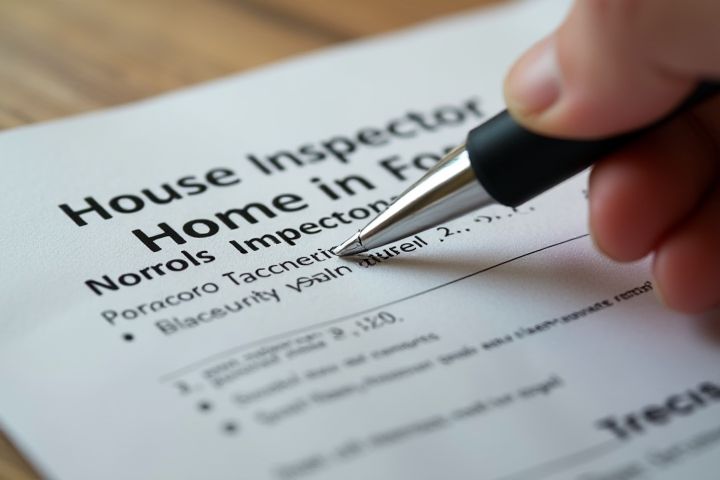
A comprehensive house inspection requires a detailed checklist to assess the property's condition. Essential tools for inspectors include a flashlight, moisture meter, ladder, and infrared camera to identify hidden issues. Key areas to evaluate are the roof, plumbing, electrical systems, HVAC components, foundation, and exterior walls. You should ensure that all utilities are turned on, as this will allow for a thorough evaluation of the home's functionality. Lastly, preparing access to attics, basements, and crawl spaces is crucial for a complete inspection.
What Is Needed For A House Inspection
Foundation condition
A comprehensive house inspection begins with assessing the foundation condition, which is crucial for structural integrity. Inspectors examine visible cracks, settling, and moisture issues, utilizing tools like a level to identify uneven surfaces. The presence of water damage, mold, or pest infestations near the foundation often indicates underlying problems that require attention. You should expect the inspector to provide detailed observations and recommendations, focusing on repair costs which can range from a few hundred to several thousand dollars, depending on the severity of the foundation issues.
Roofing integrity
A thorough house inspection focusing on roofing integrity requires examining several key components, including shingles, underlayment, and ventilation systems. Inspectors assess for missing, cracked, or curling shingles, as these can indicate potential leaks and structural issues. It's crucial to evaluate the condition of flashings around chimneys and vents, ensuring they are intact and properly sealed, as damaged flashings can lead to water intrusion. The roofing's drainage system, including gutters and downspouts, should also be checked for blockages and proper slope to prevent water pooling and subsequent damage to the roof deck.
Plumbing system
During a house inspection, the plumbing system is evaluated for integrity and functionality. Inspectors check for visible leaks, corrosion, and proper drainage in pipes, often measuring water pressure which ideally ranges between 40 and 60 psi. They also inspect fixtures like faucets, toilets, and water heaters for functionality and efficiency, ensuring they meet local building codes. Understanding the age and material of your plumbing, such as PVC or copper, can also indicate potential future issues.
Electrical wiring
During a house inspection focusing on electrical wiring, a licensed inspector evaluates critical components such as circuit breakers, wiring insulation, and grounding systems. The inspector checks for outdated materials like knob-and-tube wiring, with homes built before 1950 often presenting this issue. Ground Fault Circuit Interrupters (GFCIs) are tested in wet areas, as they reduce the risk of electrical shock, while all outlets should be assessed for functionality and proper voltage. Ensuring compliance with the National Electric Code (NEC) is vital, as it establishes safety standards that protect your home from electrical hazards.
HVAC functionality
A thorough house inspection focusing on HVAC functionality requires assessing the heating, ventilation, and air conditioning systems for efficiency and safety. Check the age of the HVAC system; units over 15 years may need replacement. Inspect air filters for cleanliness and ensure ducts are sealed properly to maintain optimal airflow. Measure temperature differentials between supply and return vents to evaluate the system's performance and efficiency levels.
Insulation quality
During a house inspection, evaluating the insulation quality is crucial for energy efficiency and comfort. Inspectors typically assess the R-value of insulation materials, with higher values indicating better thermal resistance; ideal ranges for attics should be between R-30 and R-60. They will also check for gaps, moisture issues, or improper installation that can significantly reduce insulation effectiveness. Insulation types, such as fiberglass, foam, or cellulose, each have unique properties impacting your home's energy consumption and overall performance.
Signs of pest infestation
During a house inspection, identifying signs of pest infestation is crucial for ensuring the property's integrity and safety. Look for droppings, which can vary in size based on the pest; for instance, rodent droppings are typically 1/4 inch long, while those from larger pests like raccoons can reach up to 3/4 inch. Chewing marks on wood surfaces, holes in walls, or damaged insulation may indicate the presence of termites or rodents. Additionally, musty odors or visible nests, especially in attics or basements, can signal infestations that could lead to costly repairs if left untreated.
Structural components
A thorough house inspection focuses on key structural components, primarily the foundation, framing, and roofing systems. Inspectors assess the foundation for signs of settling or cracking, which could indicate serious structural issues, while framing is evaluated for any signs of warping or insect damage. Roofs are inspected for integrity, looking for missing shingles, leaks, or structural weakness due to age or weather conditions. Understanding these elements can help you make informed decisions about necessary repairs or maintenance, ensuring the longevity and safety of your home.
Water damage signs
In a house inspection, identifying water damage signs is crucial for ensuring the integrity of the property. Look for discoloration or staining on walls, ceilings, and floors, which often indicate past or present leaks. Examine the area around windows and doors for warped or swollen frames, and check the basement for signs of mold or excessive moisture, such as a musty odor. Remember, addressing water damage early can save you thousands in repairs, as untreated issues may escalate into major structural concerns.
Safety features
A thorough house inspection focusing on safety features requires checking key elements such as smoke detectors, carbon monoxide detectors, and fire extinguishers, all of which should be strategically placed according to safety standards. Additionally, assessing the electrical system is crucial; ensure there are no exposed wires, that circuit breakers function properly, and that the wiring meets the current National Electrical Code. Inspecting for window egress and verifying that all exits are accessible also play a crucial role in enhancing safety, especially in emergencies. Finally, ensure that stairways have secure handrails and appropriate lighting to prevent falls, a common hazard in residential settings.
